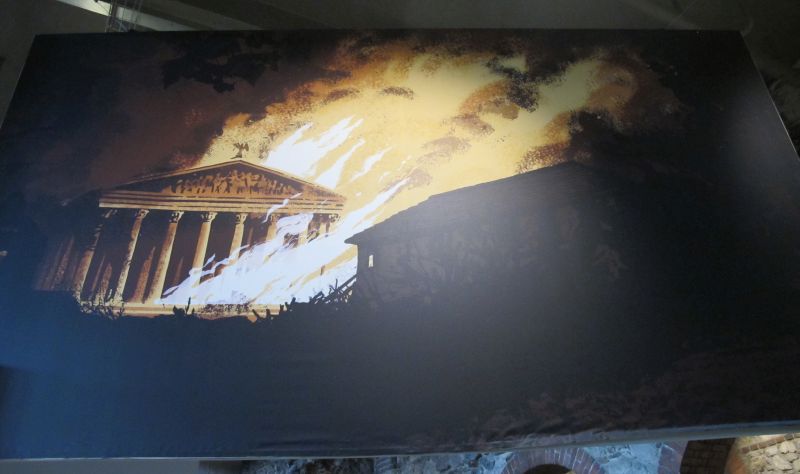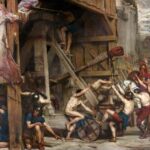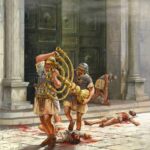Chapters
Colonia Claudia Victricensis was funded by Claudius and was to be settled by veterans. The city also became the first capital of the province, and in order to perform this function, numerous public buildings were located there, including the temple of the imperial cult.
The temple was built between 49 and 60 CE. In 54, and after Claudius’ death and counting as a god, it was dedicated to his honour, becoming Templum Divi Claudia (“Temple of the Deified Claudius”).
It had the form of a classical eight-sided temple, without windows, perfectly positioned along the north-south axis. The foundation was made by pouring Roman concrete into previously dug trenches. The facility was made of building materials imported from the remotest corners of the province, including the so-called Purbeck marble, however, for the finishing touches such as rare and valuable marble from Tunisia. Cella had an area of 285 m2, about 20 m above the podium, and you could enter it perfectly from the south. Along both longer walls of Celli columns were placed parallel to them in such a way that the gaps between them were two and a quarter of the diameter of a single column – it was the so-called eustile. According to the classical template of the temple, the columns were also placed parallel to its southern wall. The two central columns, between which the road to the entrance led, were separated from each other by three diameters, unlike the others. Most likely, an equestrian statue of Claudius was placed inside the cella, the head of which was later discovered in Suffolk (it was probably taken away as loot after the city was conquered and destroyed by rebels). The temple altar was placed in front of the temple, in front of the stairs on the podium.
Boudicca’s Revolt
Colonia Claudia Victricensis, as the capital of Roman Britain, became the first target of Boudica, the rebellious queen of the Icen. When thousands of Britons poured into the suburbs and began the slaughter of the Roman population, the inhabitants took refuge in the temple walls, sheltered by a small number of auxiliary soldiers and a militia made up of residents, mainly veterans, who were settled in the colony after their term of service. Even the gods could not help the besieged – Suetonius Paulinus with most of the troops was in Wales, while the rest of the Roman troops were heavily dispersed in the area. A small force from the 9th Legion was surrounded and destroyed before reaching the city. After two days of fending off the attacks of an overwhelmingly numerical enemy and the Celts’ invasion of the temple itself, the Romans laid down their weapons and died in torment.
After defeating Boudica, the Romans decided to rebuild the city. The temples were also rebuilt, which now made an even greater impression because it gained surrounding them – 120 m long – arcades. The entrance to such a separate temple area led under an impressive arch (8 m wide). The Temple of Claudius was to show the enslaved Britons that Rome cannot be defeated – after each defeat, it arises even stronger and more magnificent. Moreover, care was taken not to repeat the defeat of 61 CE – the city was surrounded by stone walls that protected Claudius’ temple until the collapse of Roman rule in Britain in the 5th century.
On the basis of archaeological finds, some researchers formulate the thesis that during the late empire (no later than 395), the temple of Claudius was rebuilt into a Christian church.
Epilogue
The abandoned temple found itself in the circle of attention again in Normandy times. It was then that it was probably pulled down to its foundations (including columns with brick cores), and a castle was built on the concrete foundation itself, thoroughly rebuilt in later years. Colchester Castle is still standing today, and in the museum organized there, we can admire the relics of over 2 thousand. years of history of this region, including a rich collection of Roman antiquities, incl. glass.








